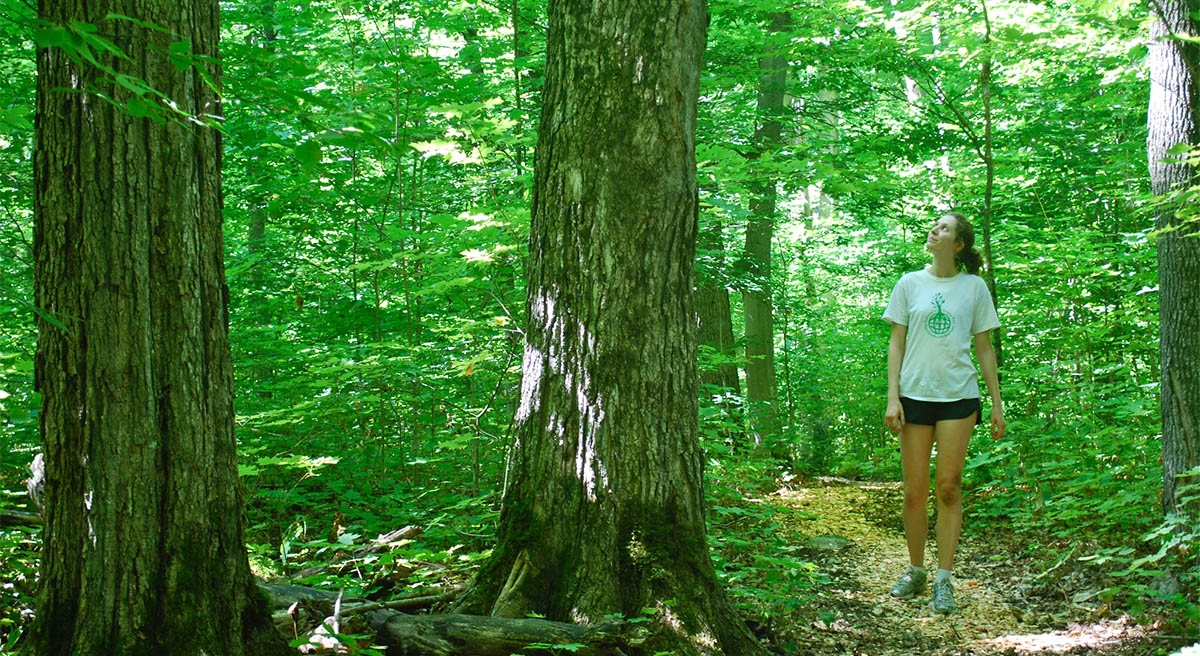
Get Outside and Benefit From Full-Spectrum Natural Light
by Lynn Jones, Ottawa River Institute
Natural light, a powerful health elixir, is freely and abundantly available, yet many of us do not get enough of it.
Six decades ago, in the early 1960s, a fellow by the name of John Nash Ott invented time-lapse photography and created famous movie sequences of flowering plants and growing vegetables for Walt Disney and other film studios. It was exacting work and involved much trial and error. In the process, Ott learned a great deal about the critical importance of full-spectrum natural light to health in plants and animals.
Ott discovered that the intensity, timing and wavelength distribution of light falling on plants and animals affect things like the setting of buds, opening of flowers, determination of sex and maturing of fruits. At the cellular level, cell division and photosynthesis were greatly affected by the type of light falling on microscope slides. In the classroom, the type of lighting affected student behaviour and ability to concentrate.
In 1973, Ott published a book about his findings entitled Health and Light: The Effects of Natural and Artificial Light on Man and Other Living Things. Used copies of the book sell on Amazon for hundreds of dollars, but you can download and read a PDF version of the book. I highly recommend it! (It’s easy to find; just Google “Ratical.org Health and Light” or click here.)
In his book, Ott relates a number of personal anecdotes of chronic disease healing, including the healing of his own severe arthritis from exposure to outdoor natural light for five hours each day without any eyewear.
Ott had many high-profile medical collaborators and published numerous scientific papers but academic acceptance of his ideas was slow in coming. This is often the case with research that challenges existing paradigms. Happily, recent research has confirmed and expanded on Ott’s findings.
One recent discovery is a special type of cells in the retina of the human eye that are sensitive to light but not involved in vision. These cells communicate directly with our brain’s control centre, the hypothalamus that regulates circadian rhythms governing sleep, hormone release, appetite, and body temperature. There is continuous communication between the retina and hypothalamus when we are outdoors and exposed to daily variations in natural light, but not when we are inside.
In other recent discoveries, exposure to sunlight has been found to increase serotonin and endorphin levels, both of which contribute to feelings of well-being. Sunlight exposure also reduces levels of cortisol, the stress hormone, and improves sleep quality by regulating melatonin production.
Two types of light that are important for human health — ultraviolet and infrared — do not readily pass through glass and are, therefore, particularly problematic for people who spend a lot of time indoors.
It’s been known for many years that the ultraviolet portion of sunshine transforms natural chemicals in our body into vitamin D, essential for good health. Adequate blood levels of Vitamin D decrease risks of common cancers, autoimmune diseases, infectious diseases, and cardiovascular disease. UV light can also be helpful in treating skin conditions and is known to enhance mood. Growing numbers of scientists are concerned that efforts to protect the public from excessive ultraviolet radiation (owing to risks of skin cancer) have prevented access to the many diverse health-promoting benefits of ultraviolet radiation exposure.
Therapeutic benefits of infrared light include stimulation of mitochondrial energy production, and reduction in pain and inflammation. It is also important for cognition, immunity and wound healing. Red light therapy is very popular right now. A recent segment of the CBC program Quirks and Quarks discussed the negative effects of LED lights that are leaving us “starved of red and infrared light.”
Fortunately, green leaves reflect infrared light! We can get bathed in red light any day of the week by taking a walk in the woods or the park. There are also red light therapy devices available that can provide healing benefits.
There is no doubt much more to learn about the many ways that light impacts our health. But in the meantime, full-spectrum natural light is an abundant, free elixir of life. We only need to step outside to take advantage of it.
Lynn Jones is a founding member of the Ottawa River Institute, a non-profit, charitable organization based in the Ottawa Valley. ORI’s mission is to foster sustainable communities and ecological integrity in the Ottawa River watershed.
HEADER IMAGE: A red light bath is one of many benefits of walking in the forest. Photo: Grant Dobson.









